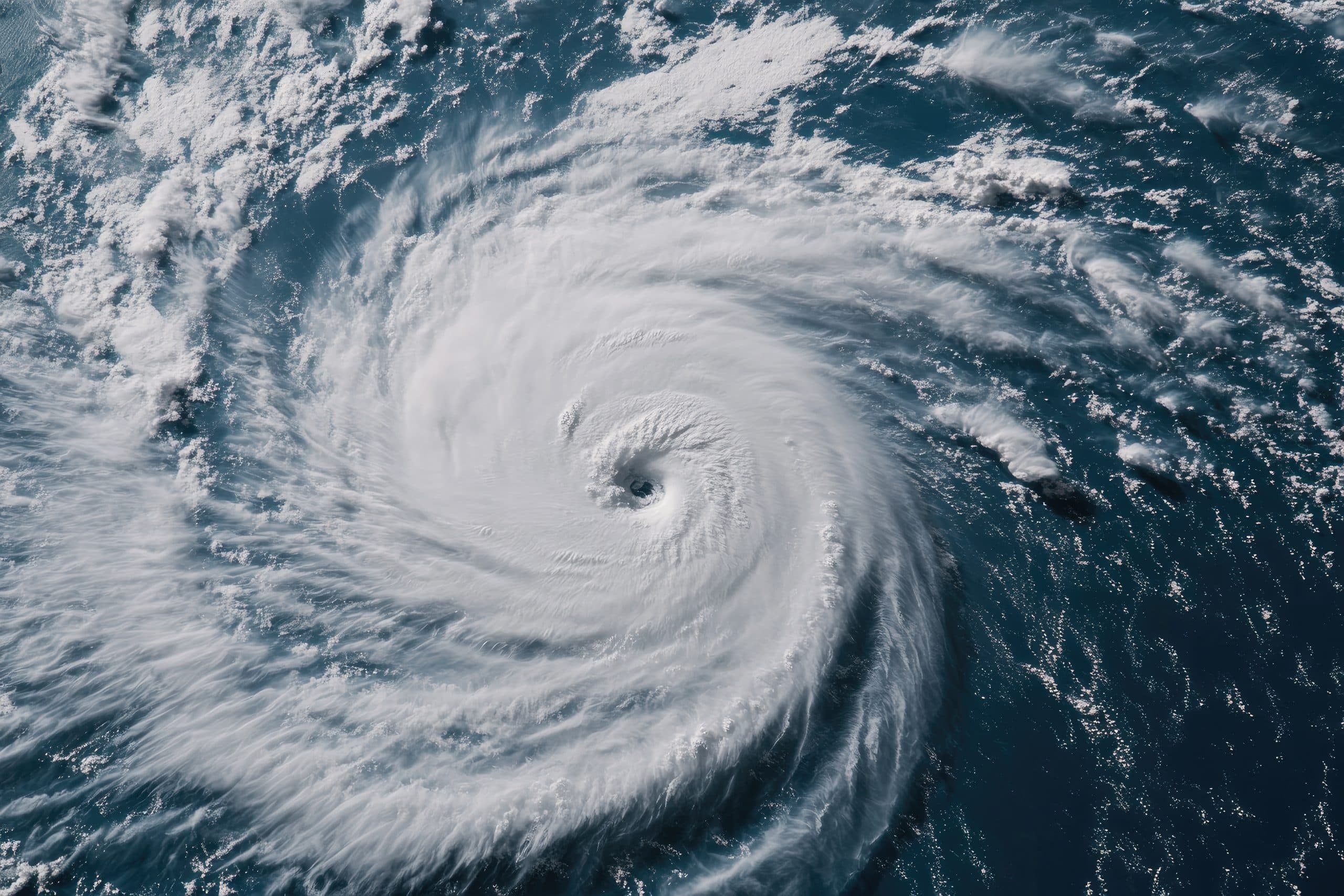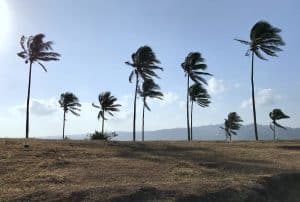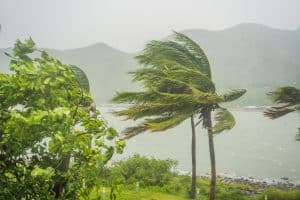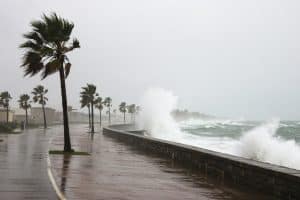Hurricane Erin track updates 2025 Outer Banks


As Hurricane Erin moves closer to the East Coast, rip current warnings are becoming a critical concern for beachgoers. These powerful currents can form suddenly, increasing the danger for swimmers and surfers.
Understanding how Hurricane Erin affects ocean conditions and knowing how to stay safe is essential to ensuring a safe beach experience.
In this article, we dive into what Hurricane Erin means for rip currents and offer tips on how to stay safe while enjoying the coast.
Understanding rip currents during hurricanes
Understanding rip currents during hurricanes is vital for anyone spending time at the beach, especially as storms like Hurricane Erin approach the coastline.
These powerful currents can form suddenly and can be extremely dangerous, pulling swimmers away from the shore at high speeds.
When hurricanes like Hurricane Erin stir up the ocean, they create the perfect conditions for rip currents to develop, making it more important than ever to be aware of how they form and how to protect yourself.
What Are Rip Currents?
Rip currents are fast-moving channels of water that flow away from the shore and into deeper water. They are created when waves push large amounts of water toward the shore, and this water needs to flow back into the ocean.
Under normal conditions, rip currents can form, but they are more dangerous when Hurricane Erin stirs up the ocean with powerful winds and heavy waves.
These hurricanes increase the intensity of the waves, leading to stronger rip currents that can sweep even experienced swimmers out to sea.
During Hurricane Erin, the risk of encountering rip currents rises significantly, and they can appear suddenly, without much warning.
Swimmers need to be aware of subtle signs of rip currents, such as areas where the water looks calmer or has irregular wave patterns compared to surrounding areas.
The strength and speed of these currents can vary, and even small rip currents can be dangerous in storm conditions.
How Do Rip Currents Form?
Rip currents during hurricanes like Hurricane Erin are influenced by several factors that interact with the ocean’s natural patterns. The most significant contributors to their formation include large waves, wind direction, and beach topography.
Strong waves during Hurricane Erin cause a powerful force against the shore, which forces water to flow back into the ocean. This creates the conditions for rip currents.
Additionally, winds blowing toward the shore add to this excess water, which then has to break out, contributing to the formation of these currents. The shape and structure of the beach also impact rip current formation.
For example, beaches with particular underwater features, such as sandbars or steep drop-offs, create narrow channels that can funnel water into dangerous currents.
These factors make rip currents particularly unpredictable and dangerous during hurricanes.
The sheer power of Hurricane Erin increases both the frequency and strength of these currents, making it important for beachgoers to understand the conditions and how to respond accordingly.
Watching for Signs of Rip Currents
Recognizing the signs of rip currents is crucial, especially when conditions are rough due to hurricanes like Hurricane Erin. Look for areas where the water looks unusually calm or choppy compared to surrounding areas.
Rip currents often appear as narrow, fast-moving gaps in the waves where water is flowing away from the shore.
Pay attention to the waves, as areas where the water suddenly calms or has irregular patterns can signal the presence of a rip current. Being observant of the water’s behavior is one of the best ways to avoid these dangerous currents.
The strength of the waves and the sudden breaks in the wave pattern are also clues. During hurricanes like Hurricane Erin, large waves can disrupt the usual flow of water, causing rip currents to form quickly in certain areas.
If you spot any of these signs, it’s best to avoid entering the water and follow local safety advice to stay safe.
Staying Safe from Rip Currents
If you do find yourself caught in a rip current, the most important thing is to stay calm. Panicking can waste precious energy and make it harder to escape.
Instead of trying to fight against the current, the best thing to do is swim parallel to the shore. This allows you to break free from the current’s grip without exhausting yourself.
If you find that you cannot escape the current by swimming, you should focus on floating or treading water to conserve energy.
Most rip currents will weaken after a short distance, and floating will help you stay afloat until help arrives or the current dissipates.
If you are unable to swim out of the current, it is important to signal for help. Try to make yourself visible by waving or shouting, so lifeguards or nearby swimmers can assist you.
Knowing how to respond when caught in a rip current can save your life, especially during hurricanes like Hurricane Erin, when conditions are more hazardous than usual.
Understanding how Hurricane Erin affects rip currents and knowing how to respond to them is key to staying safe at the beach during stormy conditions.
Always be cautious and stay informed about ocean conditions, especially when hurricanes are approaching.
How Hurricane Erin affects coastal waters
Understanding how Hurricane Erin impacts coastal waters is vital for beach safety and awareness. Hurricanes can drastically change ocean conditions both during and after the storm, creating hazardous environments for beachgoers.
With the power of Hurricane Erin affecting water levels, temperature, and quality, it’s essential to be aware of how these changes can influence swimming, marine life, and overall beach conditions.
By grasping the shifts that occur in the aftermath of a hurricane, you can better protect yourself and others while enjoying the beach during such conditions.
Impact on Water Levels
One of the most immediate effects of a hurricane like Hurricane Erin on coastal waters is the rise in water levels due to storm surges.
As the hurricane moves toward the coast, the strong winds push seawater inland, causing a dramatic increase in water levels. This surge can flood low-lying areas, including beaches and coastal roads, making them hazardous to navigate.
These rising water levels create dangerous conditions for swimmers, boaters, and anyone near the shoreline.
When a storm like Hurricane Erin causes a storm surge, the sudden rise in water can swiftly cover areas that are usually safe, including dunes, boardwalks, and parking lots.
This flooding can be dangerous, especially in regions where there is little time to evacuate or seek higher ground.
Coastal areas become especially vulnerable as the storm surge inundates both beaches and infrastructure, potentially trapping people in the path of rising waters.
Always pay attention to local weather advisories and stay alert to evacuation orders or flood warnings when a hurricane is nearby.
Changes in Water Temperature
Another significant effect of Hurricane Erin on coastal waters is the fluctuation in water temperature. The increased winds and rainfall from the hurricane can cool the surface of the ocean, creating cooler waters near the shore.
However, the deeper ocean currents, often warmer, may rise to the surface during the storm, causing temperature differences. These shifts can make swimming conditions unpredictable and potentially dangerous.
Temperature changes can affect both local marine life and human swimming behavior. For example, sudden changes in water temperature may cause discomfort for swimmers, as the ocean may feel much colder or warmer than expected.
Additionally, the marine life displacement caused by the storm can be influenced by these temperature changes, as sea creatures seek refuge in areas with more stable conditions.
It’s important to be aware of these shifts, as sudden temperature fluctuations can impact swimming conditions and safety in the water.
Water Quality Concerns
In the aftermath of Hurricane Erin, water quality is often compromised due to heavy rainfall and storm runoff. The rain can wash debris, pollutants, and contaminants into the ocean, leading to unsafe swimming conditions.
These pollutants may include chemicals, waste, and other harmful substances that can pose health risks to beachgoers. The combination of storm surges and rainfall can also stir up sediment from the ocean floor, further deteriorating water quality.
After a hurricane, local health authorities often issue advisories regarding water quality, advising people to stay out of the water until it is safe to swim again.
Contaminants in the water can lead to skin infections, gastrointestinal illness, and other health problems, so it’s essential to always check local beach advisories before entering the ocean.
Even if conditions appear calm, the aftermath of the storm can lead to polluted waters that are hazardous to your health.
Marine Life Displacement
Hurricanes like Hurricane Erin also have a significant impact on marine life. The powerful winds and turbulent waters can displace fish and other sea creatures, causing them to move toward calmer areas.
This shift in marine life can affect local ecosystems, as creatures may move away from their typical habitats in search of more stable environments.
This displacement can also affect fishing patterns, as certain species may be harder to find in the areas they usually inhabit.
Changes in the distribution of marine life can also have long-term effects on biodiversity, as the storm’s disruption can impact feeding and breeding patterns.
Fish and other creatures that normally reside in the shallow waters near the coast may retreat deeper into the ocean or seek out safer habitats further away from the storm’s effects.
Understanding the potential displacement of marine life is important for anyone engaging in coastal activities, as it can alter fishing conditions and impact local ecosystems for some time after the storm.
Safety measures for beachgoers

Safety measures for beachgoers are especially important during events like Hurricane Erin when conditions can change rapidly.
Hurricanes bring high surf, strong currents, and unpredictable water behavior, making it crucial for beachgoers to stay vigilant.
Understanding how to protect yourself can make all the difference in ensuring a safe experience on the beach, particularly when the ocean is more dangerous than usual.
By being prepared, knowing the risks, and following safety protocols, you can enjoy the beach while minimizing the potential for accidents.
Stay Informed
Before heading to the beach, it’s important to stay informed about the weather. Tropical storms and hurricanes, like Hurricane Erin, can change rapidly, shifting from mild conditions to dangerous surf in a short amount of time.
Always check local weather forecasts and any storm advisories before leaving for the beach. If a hurricane or tropical storm is approaching, consider rescheduling your beach plans for another day.
Local authorities will issue updates on beach access, surf conditions, and whether the beach is safe to visit. Hurricane Erin, for instance, can bring significant changes in water conditions, so always be prepared for unexpected shifts in the environment.
In addition to weather updates, follow lifeguards’ instructions and respect the guidelines set by local authorities.
They are trained to keep you safe and will provide crucial information on any hazards in the area, such as rip currents or rising water levels.
Heed Warning Signs
On the beach, warning signs and flags are essential for communicating water conditions. Lifeguards use flags to indicate the safety of the water:
- Green Flag: This signals safe swimming conditions with little to no hazards in the water.
- Yellow Flag: Indicates moderate surf. While swimming is allowed, caution should be exercised as the surf may be stronger than usual.
- Red Flag: Strong currents or high surf are present. Swimming is not permitted during this condition due to the dangers of rip currents and large waves.
- Double Red Flag: The water is closed to the public. This is typically due to very hazardous conditions that make it dangerous for anyone to be in the water.
Hurricane Erin brings high waves and powerful surf, so it is especially important to respect these warnings. Ignoring flag signals can result in dangerous situations, even for experienced swimmers.
Always follow the guidance of lifeguards and pay attention to any posted warnings to avoid putting yourself at risk.
Swim with a Buddy
One of the best safety practices when heading to the beach, particularly during turbulent conditions caused by Hurricane Erin, is to swim with a buddy.
Having someone with you increases your safety, as you can help each other in an emergency. If you are caught in a rip current or face difficulty in the water, your buddy can quickly alert a lifeguard or call for help.
Swimmers should never go into the water alone, especially when conditions are unpredictable and the risk of rip currents is heightened by storm activity.
Swim with someone who is capable of assisting you in an emergency. Always agree on a clear meeting point if you become separated, and ensure that your buddy is within arm’s reach if necessary.
This simple measure can significantly reduce the risk of serious accidents.
Know Your Limits
Understanding your swimming abilities is another crucial aspect of beach safety, especially when the surf is high or the currents are strong.
In conditions like those caused by Hurricane Erin, even strong swimmers can find themselves struggling against the waves or rip currents.
If you are not confident in your swimming skills or if the water looks too dangerous, it’s better to stay in shallow water and near the shore. By respecting your limits, you avoid unnecessary risks that can lead to dangerous situations.
If you find yourself caught in a rip current, it is important to remain calm and conserve energy. Rather than trying to fight the current, swim parallel to the shore to escape its pull.
Fighting against a rip current can tire you out quickly, but swimming sideways will help you break free without wasting energy. If you are unable to swim out of the current, float or tread water and signal for help.
Remember, it is always safer to be cautious and avoid pushing yourself beyond your abilities, especially during severe weather conditions like those brought on by Hurricane Erin.
Use Life Jackets
For activities like boating or water sports, always consider wearing a life jacket, especially during the high surf and strong winds brought by Hurricane Erin.
Even experienced swimmers can benefit from the added safety that a life jacket provides, as it helps keep you afloat in challenging conditions.
Life jackets are designed to provide buoyancy, giving you extra time to regain control if you become tired or caught in a rip current. In emergencies, a life jacket can help you stay afloat while waiting for help or until conditions improve.
If you’re planning to engage in activities like kayaking, jet skiing, or paddleboarding, wearing a life jacket is a safety precaution that should never be overlooked.
Always check to ensure that the life jacket fits properly and is securely fastened before entering the water.
Local responses to Hurricane Erin events
The local responses to Hurricane Erin are crucial for ensuring the safety of communities and facilitating effective recovery after the storm.
When hurricanes like Hurricane Erin approach coastal areas, it becomes essential for local authorities, organizations, and residents to act swiftly and efficiently.
These collective efforts help minimize the impact of the storm, ensure that basic needs are met, and prepare for the recovery process.
The response from local entities, along with the preparedness of residents, plays a key role in how well the community can handle the effects of the hurricane and recover once it has passed.
Emergency Preparedness Plans
Having emergency preparedness plans in place is essential for any community at risk of a hurricane. These plans include well-defined evacuation routes, designated shelter locations, and safety protocols that help residents stay safe.
Communities often work with local authorities to plan ahead for potential storm surges, flooding, and other hurricane-related hazards.
Local governments usually conduct hurricane preparedness drills to familiarize residents with emergency procedures, ensuring that everyone knows how to act when a storm approaches.
Additionally, educational outreach programs inform the public about safety measures, including how to prepare their homes and families for a storm.
For Hurricane Erin, these plans will likely be activated well in advance, with local authorities providing guidance on evacuation and sheltering procedures as the storm intensifies.
Being familiar with these plans ensures that individuals know where to go and how to protect themselves when the situation becomes critical.
Community Resources and Shelters
During Hurricane Erin, local communities provide critical resources to assist those in need. These resources can significantly reduce risks during the storm and aid in recovery afterward.
Shelters, food and water supplies, and emergency contact systems are vital components of this community response.
Shelters are designated locations where residents can seek refuge during the storm, especially those who live in flood-prone areas or homes that may not withstand the hurricane’s force.
These shelters are equipped to provide basic needs such as food, water, and medical assistance.
Food and water supplies are another essential resource during a hurricane event.
Local organizations and government agencies often set up food banks and water distribution points to ensure that everyone in the community has access to essential supplies during the storm.
These points of access become critical, particularly if power outages disrupt regular food and water distribution channels.
Emergency contacts are established through hotlines or local resources to provide immediate assistance or guidance during the storm.
These hotlines can be used for reporting emergencies, seeking help, or obtaining updates on the storm’s progress and recovery efforts.
By ensuring access to these vital resources, local authorities can provide much-needed support during the storm, helping residents stay safe and informed.
Collaboration with Local Organizations
Local organizations play an important role in responding to hurricanes, working closely with government agencies to coordinate relief efforts and recovery operations.
Volunteers from various organizations assist in areas such as disaster relief, recovery efforts, and community communication, helping to ensure that no one is left behind in the recovery process.
Disaster relief efforts focus on immediate needs, such as food, water, and first aid. Organizations often mobilize to provide supplies, medical support, and temporary housing for those affected by the hurricane’s impact.
Following the storm, recovery efforts shift to cleaning up debris, restoring essential services, and helping families rebuild their homes and lives.
These recovery operations are often a lengthy process, requiring both local and national resources to bring communities back to normalcy.
Communication remains a crucial aspect of the response to Hurricane Erin.
Local governments and organizations use multiple platforms, including social media, community bulletins, and local news outlets, to disseminate up-to-date information about evacuation orders, weather conditions, shelter availability, and recovery progress.
Clear communication ensures that residents are kept informed about where to go for assistance and how to stay safe throughout the storm and its aftermath.
Emergency resources for rip current guidance

Emergency resources for rip current guidance are vital for ensuring safety at the beach, particularly during storms and rough surf conditions like those caused by Hurricane Erin.
Understanding and utilizing these resources can significantly reduce the risks associated with rip currents, helping you and your loved ones stay safe while enjoying the ocean.
Knowing where to turn for information and assistance can be the difference between a safe beach experience and a dangerous one.
Local Lifeguard Stations
One of the first and most reliable resources for beachgoers is the local lifeguard stations. Lifeguards are trained professionals who are equipped to identify rip currents and other potential hazards in the water.
Before entering the ocean, always check the lifeguard’s postings about current conditions, water quality, and safety measures. Lifeguards will often raise flags to indicate the presence of rip currents, waves, or strong tides. By adhering to these signals and safety tips, you can better prepare for the water conditions and avoid getting caught in a rip current.
Additionally, lifeguards are often the first responders in emergencies. They are trained to assist swimmers who may be caught in rip currents and can provide real-time updates on changing conditions.
Pay attention to their instructions, as their role is crucial in keeping the beach safe during storms, including during Hurricane Erin when conditions can become more dangerous.
Beach Safety Information
Many beaches provide safety information through signs and brochures. These materials often include:
- Identifying rip currents: Signs will explain how to spot rip currents.
- Advice for swimmers: What to do if you get caught in a rip current.
- Swim zones: Designated areas that are safe for swimming.
Taking the time to read these materials can significantly improve your safety while at the beach.
Coastal Weather Services
Before heading to the beach, especially during a storm like Hurricane Erin, it’s crucial to check coastal weather services for updates on water conditions, including rip current risks.
Several websites and mobile apps provide accurate forecast data, alerting you to potential dangers such as storm surges, high surf, and rip currents.
Coastal weather services offer real-time updates on ocean conditions, which can help you plan your beach visit. These services may include wind speeds, tide predictions, and specific warnings related to rip currents.
By staying updated with these forecasts, you can make better-informed decisions about whether it’s safe to enter the water and which areas to avoid.
When Hurricane Erin is impacting coastal regions, these services become even more important for assessing the storm’s influence on water safety.
Emergency Hotlines
Many coastal areas have set up emergency hotlines to provide immediate assistance regarding water safety and rip currents. These hotlines are often operated by local authorities, lifeguard agencies, or emergency response teams.
If you’re unsure about the water conditions or need help in an emergency, these numbers are essential to have on hand.
Emergency hotlines can provide real-time advice on the safest actions to take when caught in a rip current or when conditions worsen.
They also offer information on evacuation routes, shelter locations, and updates on changing weather conditions. Always keep these numbers handy, especially when visiting beaches prone to rip currents or during severe weather events like Hurricane Erin.
Conclusion
In conclusion, the impact of Hurricane Erin on East Coast rip current warnings underscores the importance of staying vigilant and informed when heading to the beach during storm conditions.
The powerful winds and waves associated with Hurricane Erin can dramatically increase the risks of rip currents and other hazardous ocean conditions.
By understanding the formation of these currents and heeding local warnings, beachgoers can significantly reduce their risk of accidents.
Monitoring weather updates, respecting lifeguard instructions, and being aware of the shifting ocean dynamics are all crucial in ensuring your safety.
Always pay attention to safety flags and be aware of your swimming limits, especially when Hurricane Erin or similar storms are approaching.
It’s also essential to stay informed about potential changes in water quality, marine life displacement, and other factors that may make swimming unsafe.
As Hurricane Erin continues to develop, it’s important to follow trusted sources for real-time updates.
Stay connected with reliable weather channels and reports, such as those provided by CBS News and CNN, for the latest on storm conditions and rip current alerts.
By staying prepared and responsive to official guidance, you can ensure a safer experience at the beach while navigating the potential dangers of this storm.
FAQ – Frequently Asked Questions about Rip Currents and Beach Safety
What should I do if I get caught in a rip current?
If you are caught in a rip current, stay calm and swim parallel to the shore until you are out of the current’s pull, then swim back to the beach.
How can I identify a rip current at the beach?
Look for areas where the water appears choppy or rough compared to surrounding areas, and check for gaps in the waves where water is flowing out to sea.
What safety measures should I follow while at the beach?
Always swim with a buddy, pay attention to lifeguards and warning signs, and stay informed about weather and water conditions before entering the ocean.
Are there local resources available for rip current guidance?
Yes, local lifeguard stations, beach safety signs, and emergency hotlines provide crucial information and assistance regarding rip currents and beach conditions.
Liked the article?





